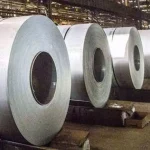Startup Burn Rate Calculator
What Is Burn Rate?
Burn rate indicates how quickly a company is using or “burning” its start-up capital before it starts generating a positive cash flow. In simpler terms, it’s a measure of how long a business can operate until it has to seek more capital. Burn rate is calculated by comparing your cash balance at the start versus the end of a period and then dividing that difference by the number of months.

How to Calculate Burn Rate?
In the venture capital realm, the burn rate is a pivotal metric that showcases how long a startup can maintain its operations before it requires more funding. By understanding the burn rate, one can estimate the implied cash runway, which is essentially the number of months a business can continue its operations before depleting its cash reserves.
To ensure sustainability, a startup must either achieve profitability or secure additional equity financing from investors before its cash reserves are exhausted. Given that many startups may take years to become profitable, the burn rate offers invaluable insights into the amount and timing of funding a startup might need.
Burn Rate Formula
There are two primary variations of the burn rate:
- Gross Burn: This variation only considers the total cash outflows for a specific period. It’s calculated as: Gross Burn = Total Monthly Cash Expenses
- Net Burn: This version accounts for the cash sales generated during the same period. Hence, the outflows are netted against the cash inflows from operations. The formula is: Net Burn = Total Monthly Cash Sales – Total Monthly Cash Expenses
In essence, while the gross burn represents the total cash spent each month, the net burn reflects the difference between monthly cash inflows and outflows.
Why is Burn Rate Important?
The significance of the burn rate and its associated concepts cannot be overstated, especially for venture investors. A majority of early-stage companies face the risk of failure once they exhaust their funding, especially if investors are unwilling to invest further.
By comprehending a startup’s spending needs and liquidity position, investors can better understand its financing requirements, leading to more informed investment decisions. The burn rate should ideally account for actual cash inflows and outflows, excluding non-cash add-backs, to provide a genuine reflection of the startup’s liquidity needs. By monitoring the monthly cash burn, startups can gain insights into:
- Anticipating spending needs for future funding rounds.
- Understanding the costs associated with operations and identifying the revenue level required to break even.
- Determining the duration for which the current spending level can be sustained before additional funding is needed.
- Comparing spending efficiency and its impact on output.
Why is Burn Rate Important?
The significance of the burn rate and its associated concepts cannot be overstated, especially for venture investors. A majority of early-stage companies face the risk of failure once they exhaust their funding, especially if investors are unwilling to invest further. By comprehending a startup’s spending needs and liquidity position, investors can better understand its financing requirements, leading to more informed investment decisions. The burn rate should ideally account for actual cash inflows and outflows, excluding non-cash add-backs, to provide a genuine reflection of the startup’s liquidity needs. By monitoring the monthly cash burn, startups can gain insights into:
- Anticipating spending needs for future funding rounds.
- Understanding the costs associated with operations and identifying the revenue level required to break even.
- Determining the duration for which the current spending level can be sustained before additional funding is needed.
- Comparing spending efficiency and its impact on output.
5 Causes of High Burn Rate
A high burn rate can be attributed to various factors:
- Operational Expenses: This includes costs related to renting office space, employee salaries, benefits packages, and other overheads. Startups, in their initial phases, often have to invest heavily in infrastructure, talent acquisition, and technology, leading to a higher burn rate.
- Growth Strategy: Aggressive growth strategies, such as heavy marketing campaigns, product launches, or geographic expansion, can lead to increased expenditures.
- Unit Economics: It refers to the profit or loss associated with each unit sold. If the cost of acquiring a customer (CAC) is higher than the customer’s lifetime value (CLV), it can lead to a high burn rate.
- Unforeseen Expenses: Unexpected costs, market downturns, or issues with product releases can spike the burn rate.
- Investment in Non-core Activities: Spending on non-essential items, like lavish office spaces or unnecessary perks, can also contribute.
Burn Rate Examples
Example 1: Imagine a tech startup that begins the year with $1.2 million in its coffers. By the end of the year, its cash reserves have dwindled to $600,000. The annual burn rate would be:
Burn Rate = ($1.2 million – $600,000) = $600,000 annually
Monthly Burn Rate = $600,000 / 12 = $50,000
This means the startup is spending $50,000 more than it’s earning every month.
Example 2: A health-tech startup starts the quarter with $300,000. Due to heavy R&D expenses and marketing campaigns, it ends the quarter with just $90,000.
The quarterly burn rate is:
Burn Rate = ($300,000 – $90,000) = $210,000 for the quarter
Monthly Burn Rate = $210,000 / 3 = $70,000
Different Types of Burn Rates
1: Gross Burn Rate: Gross Burn Rate refers to the total amount of money a company expends each month without considering any incoming revenue. It’s a measure of the company’s total monthly operating costs.
This rate encompasses all expenses, including but not limited to:
- Salaries and wages
- Rent or mortgage payments for office space
- Utilities like electricity, internet, and water
- Marketing and advertising costs
- Research and development expenses
- Production costs for goods or services
- Any other operational expenses
Gross Burn Rate gives a clear picture of the company’s total monthly expenditures. It’s especially crucial for startups to understand their Gross Burn Rate to gauge how long their current funding will last if no revenue comes in.
2: Net Burn Rate: Net Burn Rate is the rate at which a company is losing money after accounting for its revenues. It’s the difference between the money spent (expenses) and the money earned (revenues) in a month.
To calculate the Net Burn Rate, you need:
- Gross Burn Rate (total monthly expenses)
- Monthly revenue or income
Formula: Net Burn Rate = Gross Burn Rate – Monthly Revenue
Net Burn Rate provides a more comprehensive view of a company’s financial health. While the Gross Burn Rate shows total expenditures, the Net Burn Rate indicates the actual monthly financial loss or gain when revenues are considered. A positive Net Burn Rate indicates that a company is spending more than it’s earning, while a negative Net Burn Rate suggests the company is profitable.
Difference Between Run Rate and Burn Rate
Burn Rate: This metric is primarily concerned with the rate at which a startup or company is spending its capital. It’s a measure of negative cash flow and is crucial for startups to understand how long they can operate before needing additional funds.
Run Rate: This is a forward-looking metric. It takes a company’s current financial performance (usually revenue) and extrapolates it over a longer period, typically a year. For instance, if a company earned $250,000 in a quarter, its annual run rate would be projected as $1 million.
5 Ways to Reduce Your Startup Burn Rate
1: Lean Operations: Adopt a lean methodology. This means only spending on essentials and constantly reassessing processes to ensure efficiency.
2: Outsource Strategically: Instead of hiring full-time employees for every role, consider outsourcing certain tasks or roles, especially if they are not core to your business.
3: Re-evaluate Marketing Strategies: Not all marketing channels provide a good return on investment. Focus on channels that offer the best ROI and consider cutting or pausing less effective campaigns.
4: Negotiate with Vendors: Regularly review contracts and negotiate with vendors for better terms or discounts.
5: Pivot if Necessary: If a particular product or service isn’t generating enough revenue, consider pivoting to a more profitable direction.
Burn Rate Limitations
1: Short-term Perspective: Burn rate focuses on the present and immediate future, often not accounting for long-term strategies or potential future revenues.
2: Not Always Reflective of Health: A high burn rate might be justified if there’s a clear path to substantial future revenues or if the company is in an investment-heavy phase.
3: Varies Across Industries: A burn rate that’s considered high in one industry might be standard in another, making it less universally applicable.
4: External Factors: The burn rate doesn’t always account for external factors like market downturns, regulatory changes, or global events that can drastically impact a company’s finances.






